Fine tune children’s literacy skills with these playful songs from Sue Nicholls...
Songs in all genres tell stories. Think of madrigals where a shepherdess shakes her golden tresses at a lovelorn shepherd boy and….hey, nonny no!; or grand opera where performers sing through fantastically complex plots for hours; even pop songs offer somewhat shorter chronicles of love and romance: ‘I met him on a Monday and my heart stood still; doo-doo ron, ron, ron, doo-doo ron, ron!
It makes perfect sense to connect singing with story-telling, creating valid cross-curricular links that enhance both music and English. Educational research suggests that singing helps children to remember facts, so by introducing story songs, practitioners are embedding concepts such as sequencing, characterisation, structure, (beginning, middle and end), as well as introducing children to exciting and evocative vocabulary which supports the acquisition of oracy and writing skills.
The following songs are all set to familiar tunes and require no music reading skills, which makes them accessible to all non-specialist practitioners. The appealing ‘security blanket’ of a known tune can tempt even the most reluctant singer to try a song in story-time.
She had two ugly sisters,
She had two ugly sisters,
She had two ugly sisters,
Who made her do all the work!
v2. A servant once brought a letter…………
Inviting them to a ball
v3. But Cinders had no dresses…………
So she stayed home and cried
v4. A fairy discovered a pumpkin…………
And turned it into a coach
v5. Now Cinders and Prince Charming…………
They danced the night away
v6. The midnight chimes were ringing…………
She dropped her little glass shoe
v7. The prince walked round the city…………
To find the lady he loved
v8. Now here’s a happy ending…………
For Cinders and her prince
This particular tune has three repeating phrases that rise in pitch, ending with a final fourth phrase that has a different ‘shape’. This structure provides an ideal template for simple song-writing, with no rhyming patterns needed. Try writing your own traditional story songs: remember to choose up to eight key moments from each tale and match the syllables carefully to the melody. For example: ‘Red Riding Hood packed a basket’ fits the tune exactly, whereas ‘Three pigs left their mum’ is not as successful. Small syllabic changes e.g. ‘Three little pigs left their mummy’ provide stronger lyrics that fit the tune and create a more memorable song!
Build that ark! is an echo song with actions, sung to the tune of Frère Jacques. This song was originally written for http://www.continyou.org for their Singing Breakfast Clubs resource pack and is also to be included in a new book: Pat-a-cake, make and shake, reproduced here by kind permission of the publishers, A & C Black (available from November 2009, price &£;16.99, http://www.acblack.com).
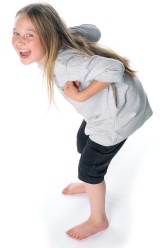 Find a forest
Find a forest
(Hand over eyes, gazing out)
Choose your tree
(Arms make a trunk shape;
fingers become branches)
Cut it down with axes
(Chopping actions – play a woodblock)
Carefully!
(Raise arm and let it fall like a felled tree)
Shape the timber
(Fingers trace the shape of a plank of wood)
With your saw
(Make sawing action – play a scraper)
Got to put a roof on
(Fingertips touch making pointed roof shape)
Build a floor!
(Hands move horizontally low down)
Noah’s ready
(Thumbs up!)
So’s his boat
(Hands wide apart showing a really large boat)
Feel those heavy raindrops
(Look up; hands held out to feel raindrops –
play a shaker)
Time to float!
(Hands make rippling wave patterns for the sea)
Shhh! is a delightful book by Sally Grindley and Peter Utton and published by Hodder children’s books.
The book describes a visit to giant’s castle offering a perfect companion to Jack and the Beanstalk. At the moment when each giant character becomes a bit too scary, the reader is invited to ‘turn the page!’ The lyrics, sung to Here we go round the mulberry bush, use much of the original text, linking the song to the story as closely as possible. Sing with scared, quiet, breathy voices, use animated faces and add percussion to represent the mouse, cat and hen:
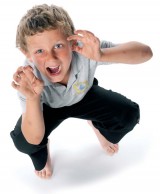 Giant’s Castle, me oh my!
Giant’s Castle, me oh my!
Tiptoe quietly, I’ll tell you why,
The giant’s mouse is just nearby,
(Spoken while miming whiskers) Squeak, squeak,
squeak, squeak,
(Hurriedly) Turn the page over quickly!
Giant’s Castle, me oh my!
Tiptoe quietly, I’ll tell you why,
The giant’s cat is just nearby,
(Spoken while miming claws) Miaow, miaow,
miaow, miaow,
(Hurriedly) Turn the page over quickly!
Giant’s Castle, me oh my!
Tiptoe quietly, I’ll tell you why,
The giant’s hen is just nearby,
(Spoken while miming flapping wings) Cluck,
cluck, cluck, cluck,
(Hurriedly) Turn the page over quickly!
Giant’s Castle, me oh my!
Tiptoe quietly, I’ll tell you why,
The giant’s wife is just nearby,
(Arms folded while one foot tapped
angrily four times)
(Hurriedly) Turn the page over quickly!
Giant’s Castle, me oh my!
Tiptoe quietly, I’ll tell you why,
The giant himself is just nearby,
(Shouted) AND HE’S AWAKE!
(Hurriedly) Shut the book very quickly!
Singing enriches story-telling, giving children a musical dimension in which to enjoy and sustain the magic of traditional characters and settings. Story songs offer another way to explore well-loved tales, reinforcing storylines, developing imagination and providing a rich seam of performance opportunities! Look at the texts listed in your Literacy planning for next term and try composing some paired songs to familiar tunes during the summer. A warning, though…it’s really addictive!
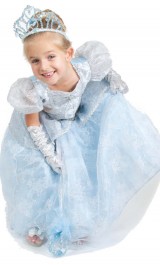 Try using the Cinderella song as the focus for a mini-project…
Try using the Cinderella song as the focus for a mini-project…
Numeracy
Use the storyline to ask problem-solving questions, for example:
If Cinderella realised that the clock was striking midnight on the third chime, how many more chimes would she hear before her ball gown changed back to rags?
If Cinders’ coach was pulled by six horses, how many legs would be galloping to the palace?
Literacy
Write an invitation, correctly addressed, including all the necessary information: date, time, venue and what to wear.
Speaking and listening
Talk about how Cinderella’s mood changed from misery to elation! Work in pairs adopting the roles of Cinderella and the Fairy Godmother and improvise a conversation that begins when the Godmother finds Cinders alone and upset and ends as the heroine departs in her coach. Use key moments within the story sequence as prompts to encourage dramatic dialogue.
ICT
Ask children to type the text from their invitations into Word and add a border or import some royal images.
Art and design
Look at famous artists’ portrayals of castles and palaces e.g. Turner, and use these as talking points to stimulate children’s own art work in varying media.
Design technology
Design and make cushions for displaying the glass slipper. Have a range of fabrics to choose from and invite children to justify their selection by using appropriate adjectives: rich, shiny, stiff, patterned, embroidered, soft etc. Have trimmings available such as lace, ribbon or braid so that the children can personalise their designs.
History
Research horse-drawn coaches from different periods of history: which one most resembles the shape of a pumpkin?
Science
Find out about other vegetables from the pumpkin family [squashes, courgettes and marrow] and grow some in the school garden.
Do you currently keep your percussion on a trolley? It’s not the best way to store and access instruments… tambourines jammed together with split skins, leaking maracas and strangely bent cymbals found lurking at the bottom!
Why not put your precious instruments out on a shelf or table, as a permanent display with labels so that everyone (staff included) learns the names? One school used the entrance hall for their music store, it was a great success because instruments have curious shapes, are good to look at and the children could choose sound-makers independently!
Teach primary examines some perfectly pitched music resources…
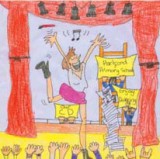 For the record
For the record
The next time you need to update your ICT suite r give the playground a makeover, Orchard Studios can help you raise funds by employing the musical talents of your pupils. Visiting your school, the company will make a professional recording of the children singing and compile an audio CD - complete with cover art designed by the pupils.
The CDs are then sold to parents, who treasure the recordings; while they often save photos and drawings from their child’s younger years, the sound of their voice is often lost. The best part is the recording costs nothing and schools can buy the CDs for as ittle as &£;3.90 each. http://www.orchardstudios.co.uk 01270 877208
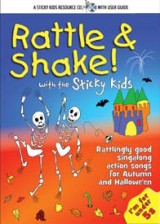 Shake it up
Shake it up
Sticky Kids has boiled up a cauldron of zingy, zippy music to celebrate the Hallowe’en season. The Rattle and Shake CD features thirteen spellbinding new songs, complete with sing-along lyrics and easy-to-follow actions for the under 7s. Rattle and Shake is the 15th title in the energetic singing series from Sticky Kids. Devised by primary teacher Anne Butler, literacy, emotional, and physical development are all supported, and the funfilled tracks will make a terrific Hallowe’en treat for children and teachers alike. stickykids.co.uk
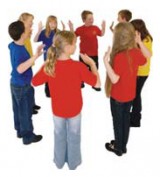 Bank on this
Bank on this
There are over 300 video clips showing singing games and musical activities for key stages 1 and 2 on The Resource Bank (theresourcebank.co.uk). They cover rhythm and pulse, pitch and all the other ingredients that go into making a successful music lesson. The videos can easily be displayed on the whiteboard, providing clear guidance for the pupils – not to mention taking off some of the pressure for you to perform in front of the class! Alongside the clips, there are over 150 notated singing games with clear instructions, and subscriptions start at &£;49.50 for the year.
The Song Bank at http://www.singup.org
Bingo Lingo published by A & C Black
Three Singing Pigs published by A & C Black
Tapping Teddies published by A & C Black
Pat-a-Cake, Make and Shake published by A & C Black
Boosting children’s self esteem
Ace-Classroom-Support
Make World Book Day Extra Special This Year
Ace-English
